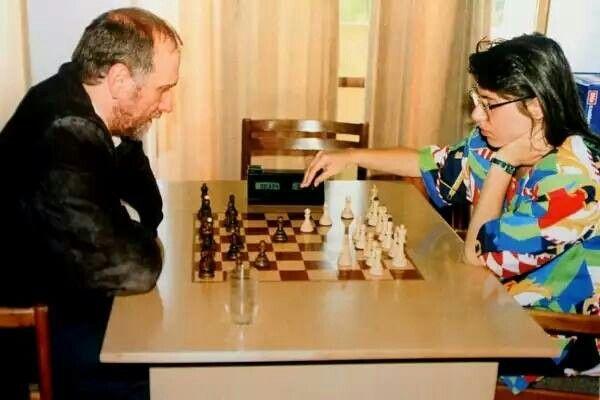
The History of Fisher Random Chess (Chess960)
The picture above was a picture of Bobby Fischer playing chess against Susan Polgar in 1993. Fischer random chess is a variant of shuffle chess, which had been suggested as early as 1792 with games played as early as 1842. Fischer's modification "imposes certain restrictions, arguably an improvement on the anarchy of the fully randomized game in which one player is almost certain to start at an advantage". Fischer started to develop his new version of chess after the 1992 return match with Boris Spassky. The result was the formulation of the rules of Fischer random chess in September 1993, introduced formally to the public on June 19, 1996 in Buenos Aires, Argentina.
Fischer's goal was to eliminate what he considered the complete dominance of openings preparation in classical chess, replacing it with creativity and talent. In a situation where the starting position was random it would be impossible to fix every move of the game. Since the "opening book" for 960 possible opening systems would be too difficult to devote to memory, the players must create every move originally. From the first move, both players must devise original strategies and cannot use well-established patterns. Fischer believed that eliminating memorized book moves would level the playing field.
During the summer of 1993, Bobby Fischer visited László Polgár and his family in Hungary. All of the Polgar sisters (Judit Polgár, Susan Polgar, and Sofia Polgar) played many games of Fischer Random chess with Fischer. At one point Sofia beat Fischer three games in a row. Fischer was not pleased when the father, Lazlo, showed Fischer an old chess book that described what appeared to be a forerunner of Fischer Random chess. The book was written by Izidor Gross and published in 1910. Fischer then changed the rules of his variation in order to make it different.
